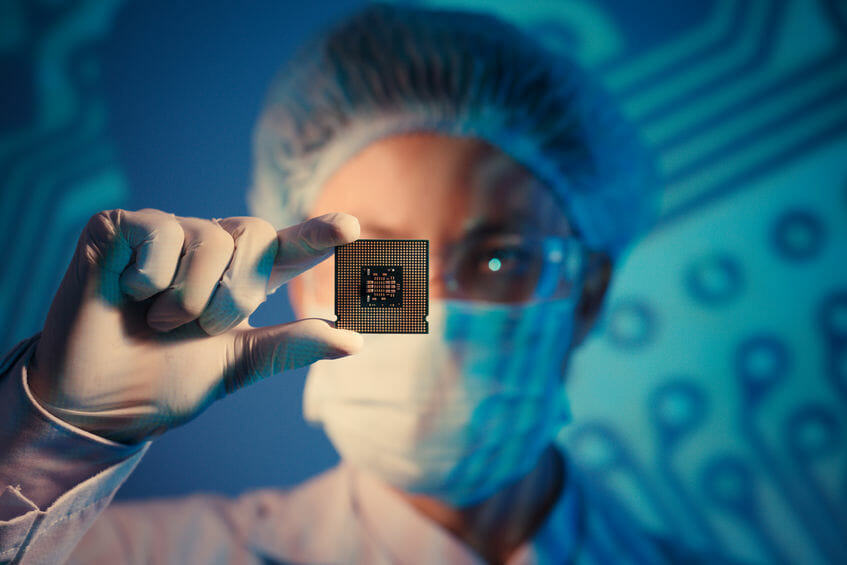After a monumental year for the top semiconductor companies in Arizona, the Valley’s global manufacturing industry is poised for greatness in 2025 and beyond.
In April, the Taiwan Semiconductor Manufacturing Company (TSMC) announced it would build a third fab center in Phoenix, bringing its total investment in the state to $65 billion. Construction is underway, and the company expects to begin high-volume production by the first half of 2025.
MORE NEWS: GPEC helps 49 companies expand or relocate into region in 2024
Additionally, Taiwan-based Sunlit Chemical opened its first U.S. outpost in Phoenix on Oct. 23. The $100 million, 900,000-square-foot facility will be a crucial partner to over 200 semiconductor-related companies in Arizona. The plant’s first phase is expected to create more than 50 local jobs by early 2025, with plans to scale up to 100 employees as production expands.
The expansions are partially fueled by the 2022 CHIPS and Science Act, a bipartisan law signed into effect by the Biden-Harris Administration to strengthen domestic semiconductor manufacturing, design and research.
Intel received a $7.87 billion award as part of the CHIPS Act. Approximately half of the total amount will be allocated to its Arizona fab, which will help create an estimated 9,000 jobs in the state.
TSMC also received $6.6 billion in federal funding under the CHIPS Incentives Program’s Funding Opportunity for Commercial Fabrication Facilities. In a press release from The White House, President Biden called this “the largest foreign direct investment in a greenfield project in the history of the United States.”
The investments have cemented Arizona as the nation’s leader in domestic semiconductor manufacturing, drawing national and international attention unseen in previous years.
Chris Camacho, president and CEO of the Greater Phoenix Economic Council (GPEC), says that GPEC’s international projects have increased nearly sixfold over the past decade. He attributes the growth to a few factors but emphasizes exuding “cultural confidence” to clients unfamiliar with the American business landscape.
“When you win a big project like [TSMC], and you can tell the story well, it begets the next project,” Camacho says. “Companies want to continue to bet on markets where you have the expertise.”
Arizona semiconductor halo effect
With the rise in semiconductor jobs infiltrating the Valley, real estate groups see opportunities for significant returns.
Richard Mack, CEO of NYC-based Mack Real Estate Group, says his company identified Phoenix as a market ripe for growth long before the rise of the semiconductor industry. With the arrival of the TSMC campus, Mack says the conviction has only strengthened.
“We anticipate many of TSMC’s business partners will require office and industrial space near the Phoenix semiconductor fabrication operations,” Mack says. “We believe that demand for commercial space should lead naturally to demand for residential, hospitality, retail, restaurant, education and recreational spaces.”
Mack Real Estate Group is currently developing Halo Vista, a $7 billion, 2,300-acre “city-within-a-city” adjacent to the TSMC campus. The project’s first phase is set to include an auto mall, retail spaces and commercial development for TSMC’s direct service providers. MREG is also working to fast-track the development of hotels, restaurants and educational facilities.
“Our objective is for Halo Vista to be an appealing and attractive community for — and to everyone — within the Greater Phoenix MSA,” Mack says.
It’s not just real estate benefiting from the semiconductor industry’s accelerated growth. Across business verticals, executive leaders view the semiconductor industry as a beacon of hope for what’s possible in the Valley of the Sun.
Thomas Maynard, vice president of business development at GPEC, says TSMC’s $65 billion investment in Arizona demonstrates the state’s capacity and willingness to support business innovation and is a testament to the strength of the Phoenix market.
“15 years ago, Arizona had a lot of warehouse and distribution centers, but there weren’t a lot of advanced manufacturing or software development operations. Now, we’re showing that we can compete for more significant projects,” Maynard says. “Arizona’s branding is in a much better place because of these big companies making investments here.”
Adds Camacho, “Whether it’s defense tech, aerospace or climate tech, we now get looks at every major deal, particularly with foreign companies looking at the U.S. market. We don’t win every one of them — even though we want to — but 10 years ago, we probably only saw one out of a hundred.”
Success in the east
Aside from North Phoenix, the East Valley has long been a key market for semiconductor fabs. The area is home to industry leaders like Qualcomm, Amkor Technology and Intel, the latter of which is the City of Chandler’s largest employer.
John Lewis, president and CEO of the PHX East Valley Partnership, attributes the East Valley’s strong presence in the semiconductor space to several factors, including available land for sale, ease of transportation and a highly educated workforce.
“Our region boasts best-in-class education institutions with world-class programs to prepare workers for jobs in the growing semiconductor and manufacturing fields. ASU has more than 31,000 engineering students, and the university’s Ira A. Fulton Schools of Engineering is ranked No. 1 in the nation in undergraduate enrollment for engineers,” Lewis says.
Over the next few years, the East Valley will add even more companies to its substantial roster. KoMiCo, a global leader in precision cleaning and advanced coatings in the semiconductor industry, is building a new fab center in Mesa. The facility should be operational by 2026 and create 200 jobs.
LG Energy Solution will also open a new $5.5 billion battery manufacturing complex in Queen Creek, the most significant single investment ever for a stand-alone battery manufacturing facility in North America. The company is expected to create nearly 4,000 jobs and become the largest employer in Queen Creek.
“We are excited to see the continued reshoring of supply chains and efforts to boost domestic R&D and manufacturing capabilities through the federal CHIPS Act and other initiatives,” says Micah Miranda, economic development director for the City of Chandler. “We believe there are a lot of opportunities to capture additional growth in these industries in Chandler and the East Valley.”




